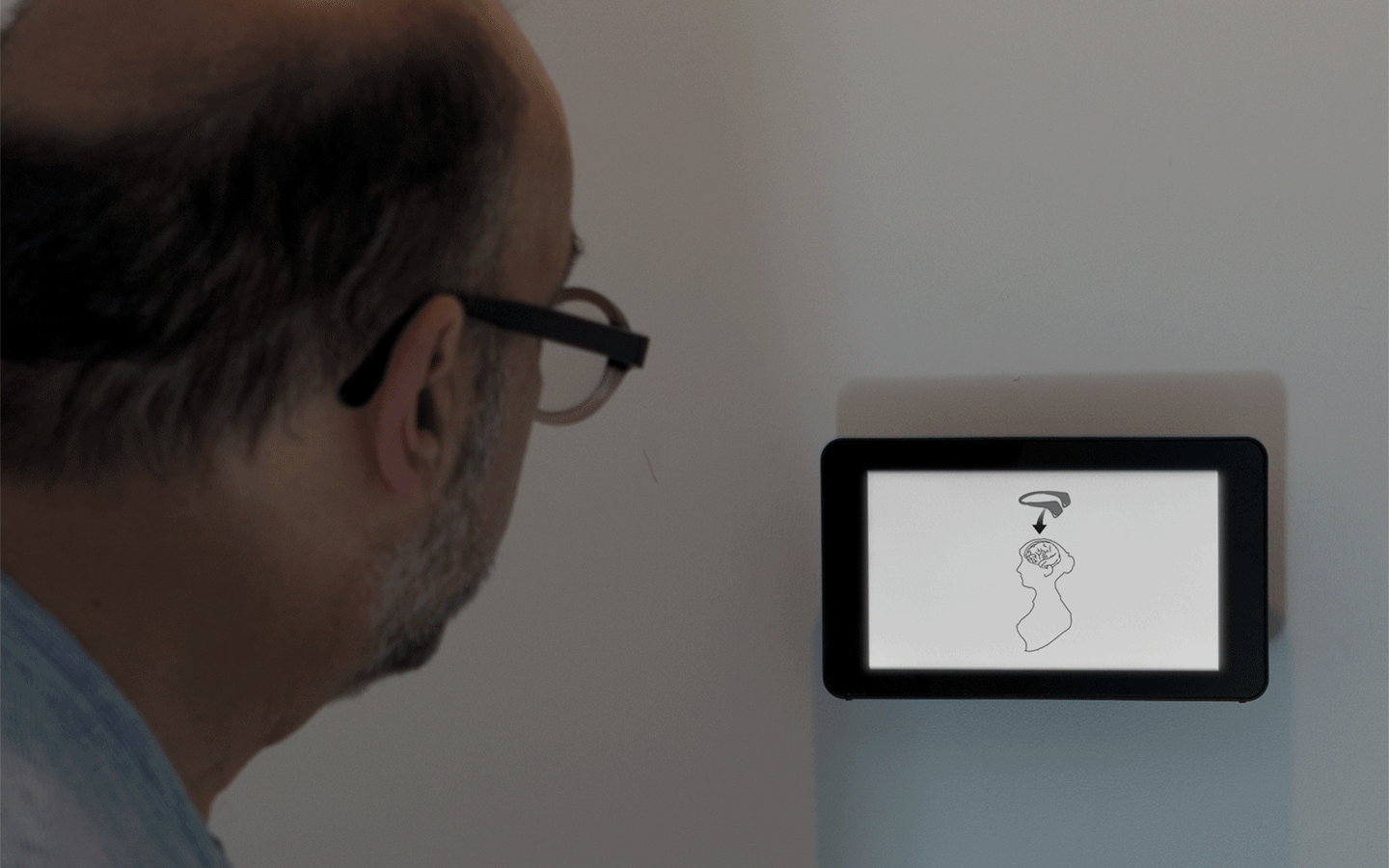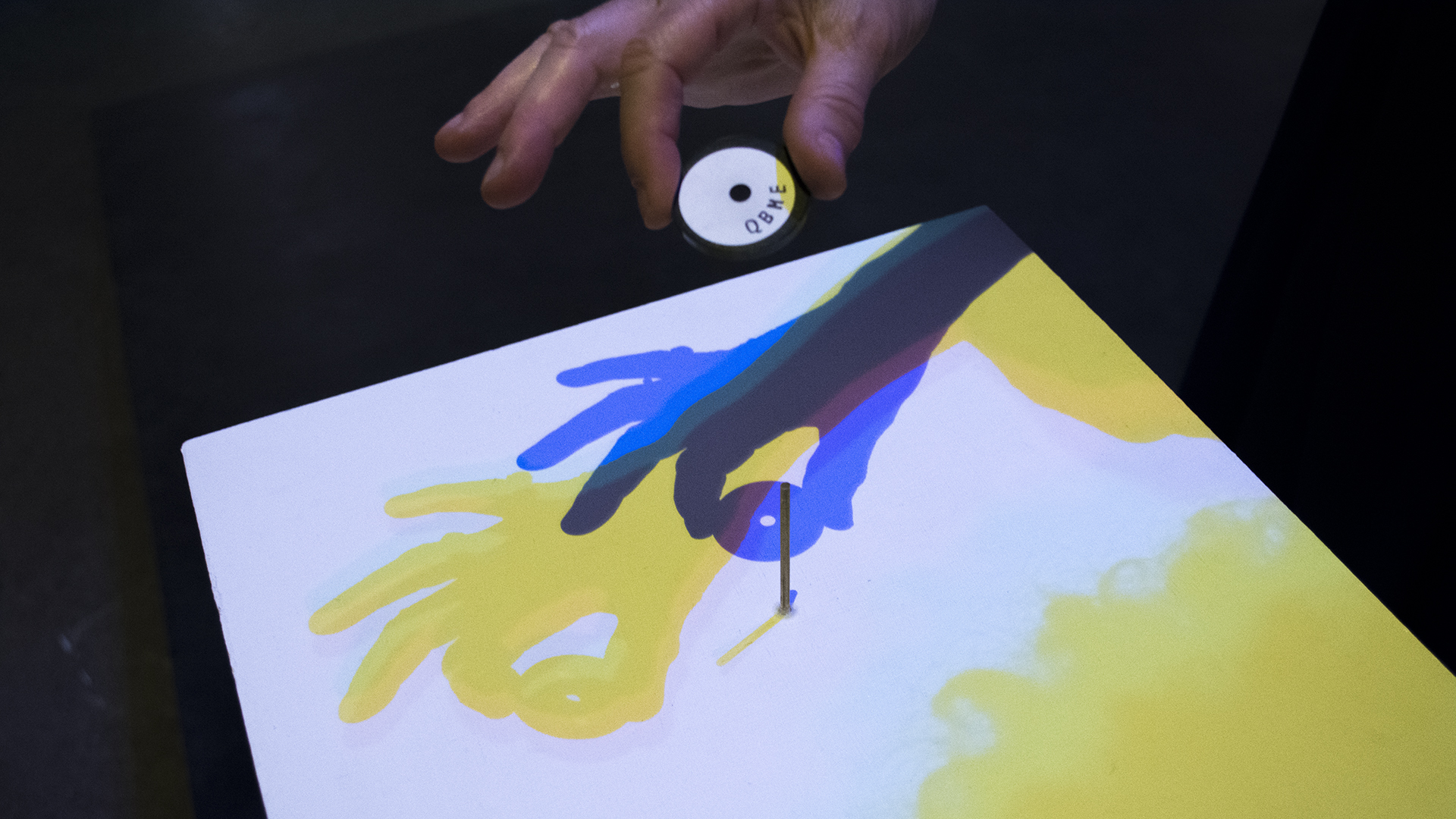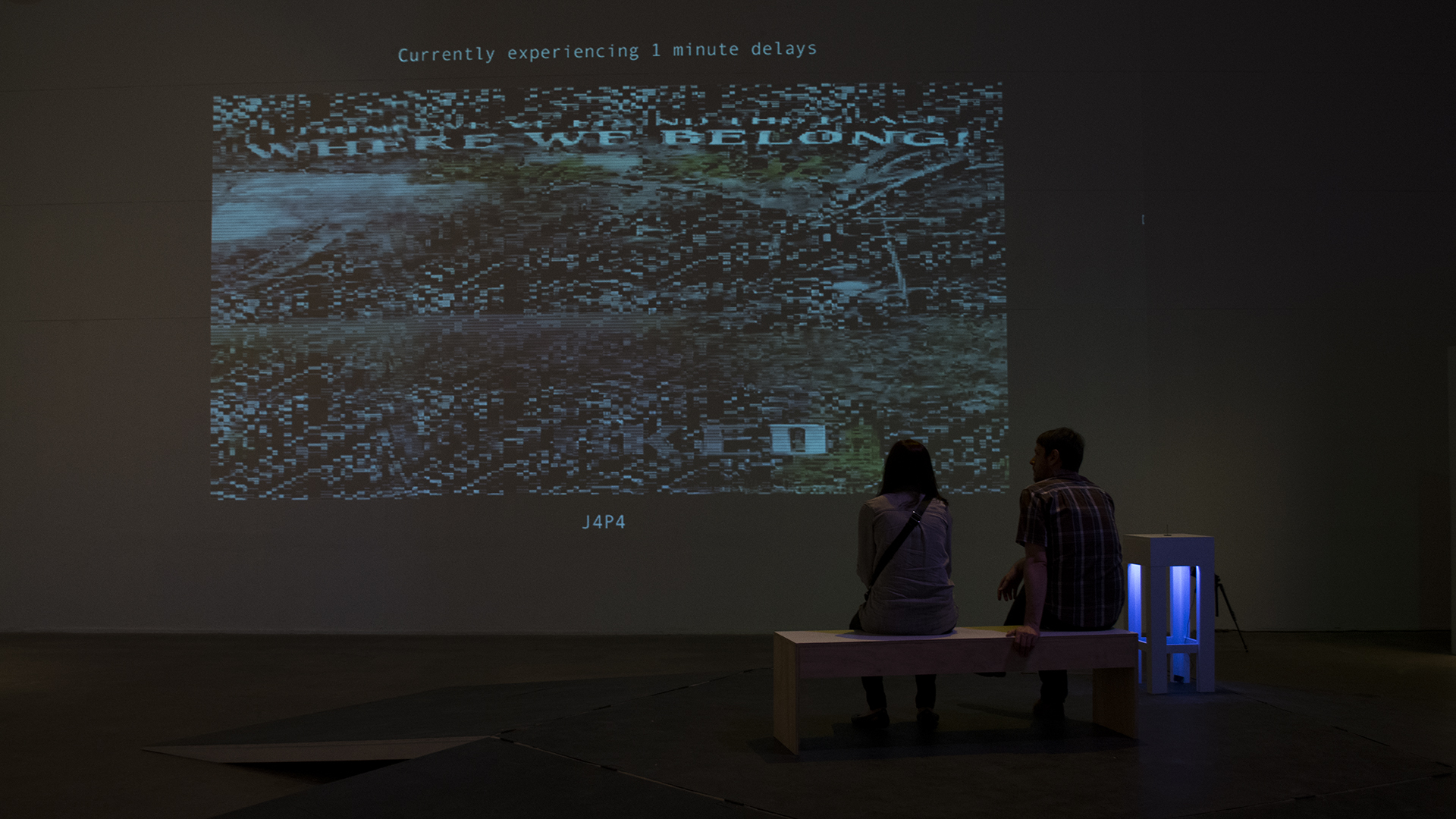When a visitor enters the space, they are confronted by three data confessional pods. Each pod contains sensors that measure biometric properties similar to those Dr. Norway thought would help produce an accurate reading of a subject’s “dream state.” Our proprietary algorithm uses the data gathered to infer the content of the visitor's dreams and translates this inference into a dynamic visual output - a dream reading.
The visitor proceeds through three steps on their journey towards visualizing their unconscious. First, they must select a Dream DOT, which contains their unique identification number; then, they submit their data; and, finally, they retrieve their dream reading. The following text is a reproduction of some of the instructions given to visitors upon entering the gallery.

Each Dream D.O.T. (Data Observation Token) is a unique identifier designed to accompany exhibition guests; take one Dream D.O.T. into each of the three data confessionals and, when finished, use the token to retrieve a personal dream visualization, based on the data collected.
You will proceed to the data confessionals. Each Data Confessional has been designed to quantify and analyze one of three physiological metrics Dr. Pawel Norway believed were necessary to visualize the content of the previous night’s subconscious at work.
The Data Confessionals are activated by placing the Dream D.O.T. on the golden post. Listen for the “beep.”

Temperature at the surface of the skin is 91°F (33°C), with a normal variation of 1°F (0.6°C) in either direction. Temperature changes in response to blood circulation. Increased stress or excitement, and the resulting constriction of the vascular system, leads to reduced skin temperature. Higher skin temperature is associated with states of relaxation and calm.
The electrical conductivity of human skin varies in response to emotional arousal and is tracked by measuring fluctuations in electrical resistance on the skin. This is known as the Galvanic Skin Response (GSR). Though GSR metrics do not indicate the quality or type of emotion, they do indicate a change in the subject’s emotional state.

EEG (Electroencephalography) is a noninvasive neuroimaging technique, which measures electrical activity on the scalp. It is used to analyze brain arousal, motivation, frustration, and cognitive workload. Outside of the medical industry, EEG metrics are marketed to consumers for deciphering brain activity during meditation and relaxation, as well focus and impulse control.

After each confessional, take your Dream D.O.T. When all 3 are complete, proceed to the dream retrieval station.

Drop your Dream D.O.T. on the gold post at the station, and wait a few minutes for your data to be compiled and output. Stay a while and watch the results of other subjects.

